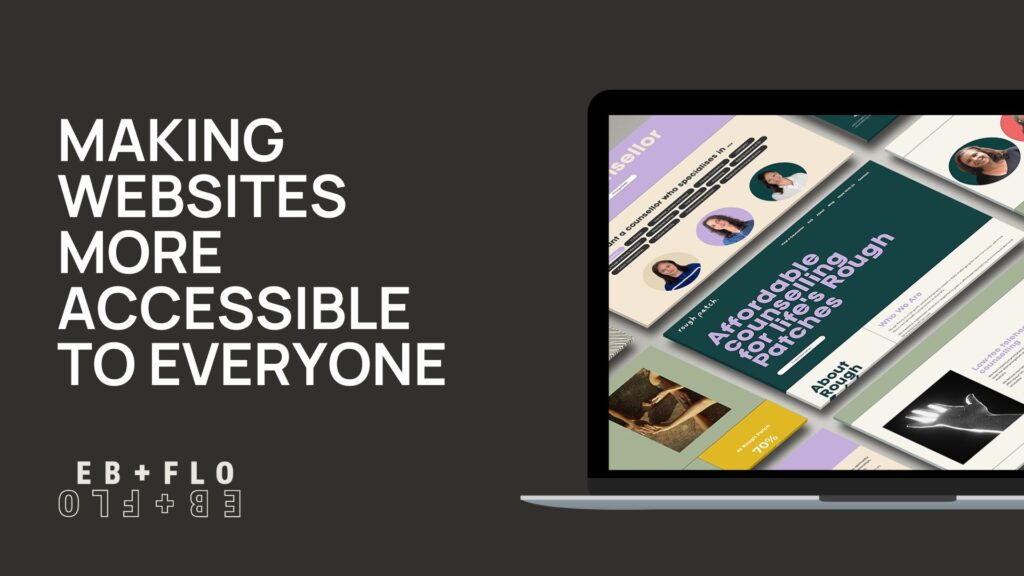How website accessibility boosts SEO and safeguards your business
Today, an accessible website is a duty and a competitive edge. Website accessibility ensures everyone can access your content, including users with disabilities. This inclusivity does more than broaden your audience. It also boosts your site’s SEO.
Also, meeting accessibility standards is vital to protect your business. Regulations in the U.S., Canada, and Europe are tightening. This post will explore web accessibility. It will cover legal issues and provide tips to make your site more inclusive. You will be well-informed and ready for the digital world.
The growing legal imperative: Regulations in the U.S., Canada, and Europe
Understanding and implementing these regulations may seem daunting, but they’re more complex than they appear. With the right tools and knowledge, you can ensure your site meets accessibility standards, protecting your business and your reputation.
UserWay: the simple solution for making your website accessible
For many businesses, navigating the complexities of web accessibility is daunting. However, tools like UserWay offer a simple and effective solution. UserWay is a versatile platform. It integrates with popular website builders like WordPress, Drupal, Shopify, Wix, and Squarespace. This makes it easy to ensure your site meets accessibility standards. UserWay’s tools make it easy to maintain accessibility. They automate monitoring, fix code, and run manual audits. This relieves you of complex technical tasks.
How an accessible website enhances user experience and brand image
An accessible website isn’t just about compliance. It’s a powerful tool to create a positive user experience for all. Accessible sites are more usable for all, including disabled users. This increases audience reach and engagement and fosters a stronger brand image. Users who feel your site is easy to navigate and inclusive will likely trust your brand. Also, accessibility sets you apart from competitors. It makes your brand look socially responsible and innovative. This gives you an edge and boosts your brand’s image.
Why it is a major SEO factor
Bing and Google prioritize websites that are user-friendly and accessible. Accessibility features, like alt text for images, help search engines. Use a proper heading structure and clear link descriptions. This will lead to higher search rankings and increased visibility. Also, an accessible website has lower bounce rates and higher engagement, which boosts your SEO. Investing in ease of access boosts your site’s SEO, not compliance.
Protect your business: avoid legal risks with website accessibility
Businesses that do not comply with increasingly stringent accessibility regulations risk legal action. Lawsuits over web accessibility are rising, and companies face significant penalties for non-compliance. Making your website accessible protects you from legal risks and will safeguard your business from costly lawsuits. By fixing usability issues, you protect your profits. You also show a commitment to inclusivity and social responsibility. And remember, accessibility is just one part of keeping your site strong – maintaining overall good website health ensures your business stays resilient, visible, and trusted online.
Easy wins: Google’s top tips for making your website more accessible
Google provides several straightforward tips for improving your website’s accessibility. These “easy wins” significantly affect how accessible your site is to users with disabilities. These guidelines will quickly improve your site’s usability and ensure it meets usability standards.
Using alt text effectively for images
The alt text describes images in the text. This lets screen readers share the image’s content with visually impaired users. Google recommends always including descriptive alt text for images, logos, and other graphics. This helps users with disabilities and boosts your site’s SEO. Search engines use alt text to understand your images.
Enhancing readability with high-color contrast
The high colour contrast between text and background is vital for readability, especially for users with visual impairments. The standard text must have a minimum contrast ratio of 4.5:1. In contrast, the larger text should have a minimum contrast ratio of 7:1, as recommended by the WCAG. Meeting these standards improves your site’s readability and navigation for all users, enhancing the user experience.
Crafting informative and accessible link text
Link text should be descriptive. It should inform users of the link’s purpose without needing more context. Avoid fuzzy phrases like “click here” or “read more. They confuse users who rely on screen readers. Instead, use specific text to show where the link goes. Use “View our accessibility guidelines” or “Learn more about our services.”
Optimizing text size and alignment for better readability
Small or misaligned text is hard to read, especially for visually impaired users. Google recommends using large, left-aligned text. It’s more readable and easier to navigate. Avoid justified text, which creates uneven spacing between words and reduces readability. Optimizing your text size and alignment improves readability for all users.
Supporting formatting with text for better usability
Visual formatting alone cannot communicate meaning, and screen readers may not announce changes like bold or highlighted text. To convey important information to all users, use text to support formatting. For example, don’t rely on more than bold text to show importance. Instead, add the word “Important” before the relevant section. This approach ensures all users understand the content, regardless of their ability to see visual formatting.
Utilizing numbered and bulleted lists for clarity
Numbered and bulleted lists are practical tools for organizing content and making it easier to understand. They help break info into chunks. Screen readers detect them, improving accessibility for users with disabilities. Google Docs and Slides auto-format lists for accessibility, making it easy to create straightforward, accessible content. By incorporating lists into your website, you enhance clarity and ensure your content is accessible to all users.
Related topics
The role of web accessibility in inclusive design: beyond compliance to a better user experience
Web accessibility is more than meeting legal requirements. It’s about creating an inclusive design that improves the user experience. Inclusive design makes your website usable for all, no matter their abilities. By focusing on accessibility from the start, you create a compliant but also user-friendly and engaging site. This approach helps all users. It makes your site more intuitive and easier to navigate, leading to higher satisfaction and retention rates.
How accessibility tools and plugins simplify the process for small businesses
Making a website fully accessible can be overwhelming for small businesses. However, numerous tools and plugins, like UserWay, simplify this process. Tools like accessibility checkers and plugins can auto-fix and detect common issues, saving time and resources. These tools help small businesses ensure their sites meet accessibility standards. They need no extensive tech skills or big budgets.
Case studies: success stories of companies that prioritized web accessibility
Many companies have successfully integrated accessibility into their websites, resulting in significant benefits. These businesses show that prioritizing accessibility boosts success. It has improved their SEO rankings and customer satisfaction.
FAQ
What you need to know about web accessibility and compliance
Web accessibility is complex, and businesses often question whether their sites comply. This FAQ section answers common concerns. It provides clear, concise answers to help you navigate web accessibility confidently.
What are the critical accessibility laws and guidelines I need to follow?
Fundamental accessibility laws and guidelines vary by region. The U.S. ADA, Canada’s ACA, and Europe’s EAA are the most recognized. Also, the Web Content Accessibility Guidelines (WCAG) set a global standard for web accessibility. These guidelines are best practices for making websites accessible to people with disabilities. Following them will help you comply with various laws.
Is it essential to test your site regularly?
Testing your website for accessibility matters is a necessary step in ensuring compliance. You can use several methods, including tools like Google Lighthouse and Wave, manual testing with screen readers, and expert audits. Regularly testing your website is vital for identifying and addressing any issues arising as your content evolves.
What tools can help me ensure my site is fully accessible?
Various tools are available to help you ensure your site is fully accessible. Popular options include UserWay and aXe. UserWay offers automated fixes and monitoring, while aXe is an open-source accessibility testing tool. CMS platforms like WordPress and Shopify also provide plugins. These tools help you manage and improve your site’s accessibility, find and fix issues, and ensure your site meets accessibility standards.
Create a site that includes everyone forever
Taking the next step: how to start improving your website’s accessibility today
Start a journey to improve your website’s accessibility. Take small, actionable steps. Use tools like Google Lighthouse or aXe to check your site’s accessibility. Consider integrating an accessibility tool like UserWay to help automate the process. Accessibility is an ongoing effort. Regularly review and update your site. This will maintain compliance and ensure an excellent experience for all users.
As the web evolves, accessibility will be crucial to success. By prioritizing accessibility, you are complying with the law, future-proofing your website against changing regulations, and, more importantly, creating a user-friendly space that should welcome all visitors, regardless of their abilities. In the long run, this commitment to inclusivity will boost your brand, improve user engagement, and help create a fairer digital world. Now is the time to take action and ensure your website is accessible to everyone.




